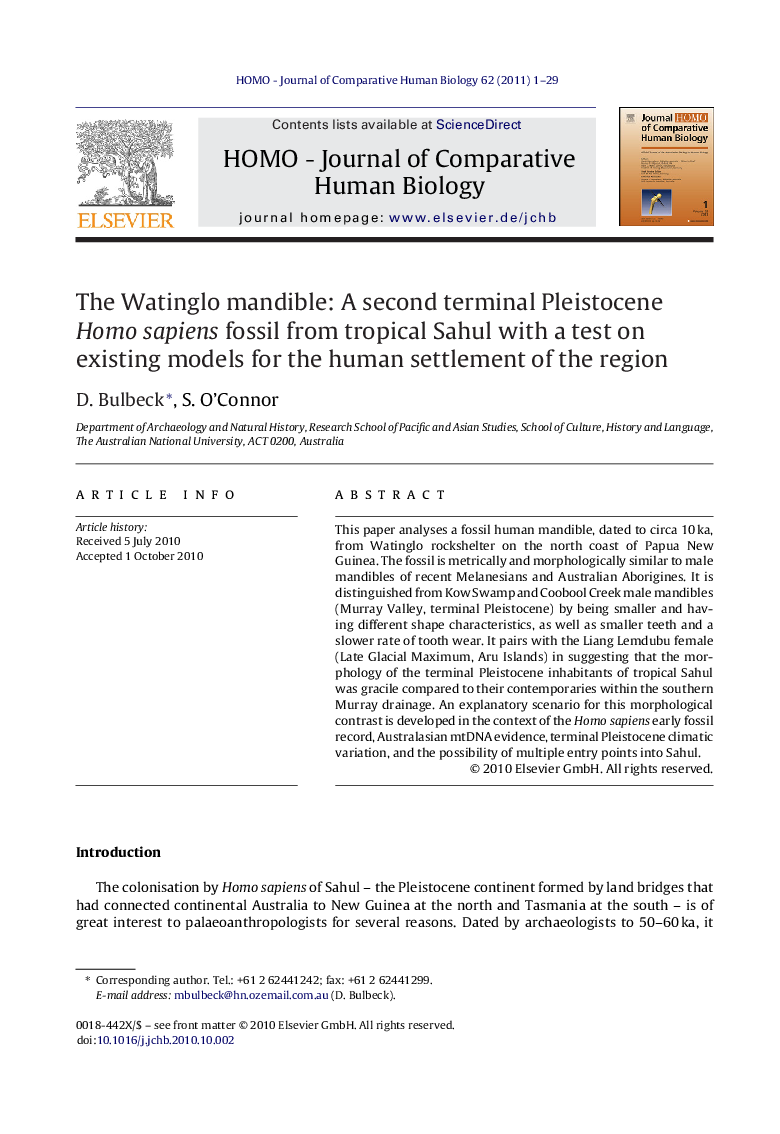| Article ID | Journal | Published Year | Pages | File Type |
|---|---|---|---|---|
| 100430 | HOMO - Journal of Comparative Human Biology | 2011 | 29 Pages |
This paper analyses a fossil human mandible, dated to circa 10 ka, from Watinglo rockshelter on the north coast of Papua New Guinea. The fossil is metrically and morphologically similar to male mandibles of recent Melanesians and Australian Aborigines. It is distinguished from Kow Swamp and Coobool Creek male mandibles (Murray Valley, terminal Pleistocene) by being smaller and having different shape characteristics, as well as smaller teeth and a slower rate of tooth wear. It pairs with the Liang Lemdubu female (Late Glacial Maximum, Aru Islands) in suggesting that the morphology of the terminal Pleistocene inhabitants of tropical Sahul was gracile compared to their contemporaries within the southern Murray drainage. An explanatory scenario for this morphological contrast is developed in the context of the Homo sapiens early fossil record, Australasian mtDNA evidence, terminal Pleistocene climatic variation, and the possibility of multiple entry points into Sahul.
